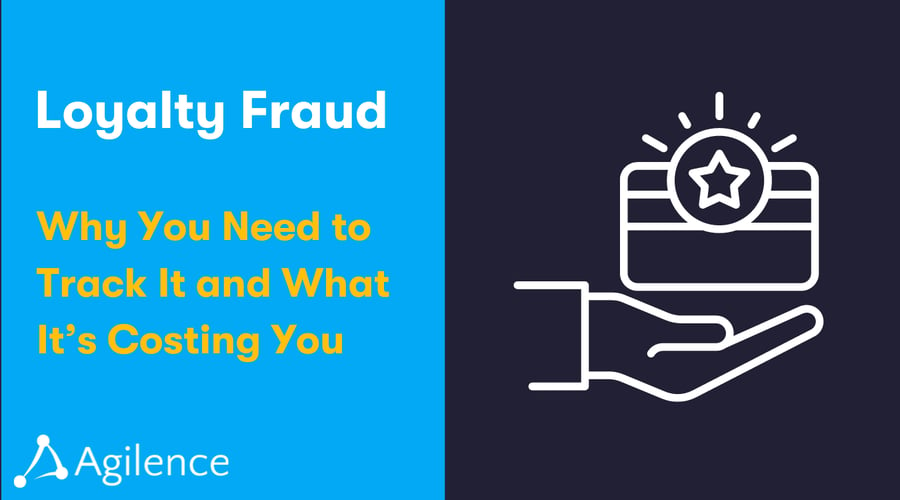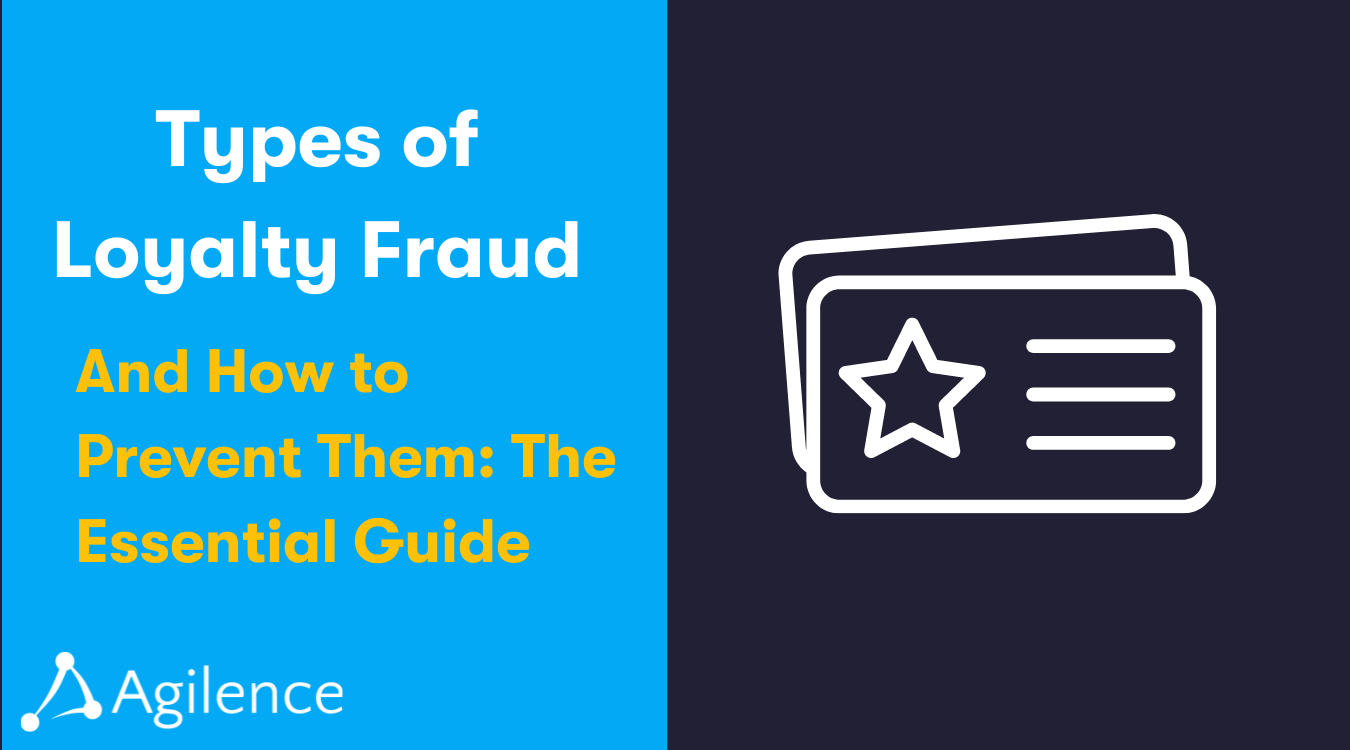Loyalty Program Fraud: Why You Need to Track It and What It’s Costing You
Retail Restaurant
Customer loyalty programs are nothing new for retailers and restaurants; they’re a time-tested strategy to engage customers and encourage repeat business. However, the quest for customer loyalty continues to be a hot topic for brands in 2024. The rise of eCommerce and delivery apps has made it easier for customers to shop around and get what they want at the best price, right from their phones – regardless of the seller. With ever-increasing competition in the retail and restaurant space, loyalty programs are more crucial than ever to foster customer engagement and retention.
However, loyalty programs also provide easy targets for cybercriminals and fraudsters – a threat which is often overlooked by busy retail and restaurant operations and Loss Prevention (LP) teams juggling a myriad of other challenges. In this article, we explore the importance of loyalty programs for retailers and restaurants, the risks and vulnerabilities they face, and how LP and operations teams can measure and monitor their loyalty initiatives to safeguard their value and effectiveness.
The Importance of Loyalty Programs
Loyalty programs work by offering customers rewards for their continued patronage, ideally creating an emotional connection with the brand. According to a study by Bond Brand Loyalty, 80% of consumers say loyalty programs make them more likely to continue doing business with brands. Loyalty programs can significantly boost customer retention rates, which can be a more cost-effective strategy than acquiring new customers. It costs up to five times as much to acquire a new customer compared to the cost of retaining a current one, and research by Bain & Company shows that increasing customer retention rates by just 5% can lead to a profit increase of 25% to 95%.
Loyalty programs are also instrumental in driving repeat business. By offering exclusive perks, such as discounts, early access to sales, or member-only events, businesses can encourage customers to return more frequently. Starbucks attributes 40% of its total sales to its Starbucks Rewards program. Retained customers are key for brands because they buy more often and spend more than new customers – they like your products and keep coming back for more. Loyalty programs increase purchase frequency, Average Order Value (AOV), and engagement, leading to a greater Lifetime Value (LTV) of loyalty program customers.
And loyalty programs not only enhance customer satisfaction but also provide valuable data on consumer purchasing habits, which can be leveraged to tailor marketing strategies and personalize customer experiences. As data privacy becomes more important, loyalty programs empower brands to own and collect data throughout the customer's buying journey, providing invaluable first-party and zero-party data.
Understanding the Risks of Loyalty Fraud
While loyalty programs are indispensable for retail and restaurant operators aiming to enhance customer engagement, drive repeat business, and secure a competitive edge in the market, they are increasingly targets for abuse. In the past few years, loyalty program fraud has risen by 89%, with 72% of loyalty managers saying they’ve experienced fraud, according to the Forter Fraud Index. Loyalty points have monetary value, and there is an estimated $48 trillion worth of unspent points globally, presenting a tempting opportunity for fraudsters. In the US alone, $140 billion worth of rewards points sit unused, and with nearly half of all reward program members inactive, they are often unmonitored.
The Loyalty Security Association estimates that $3.1 billion in redeemed loyalty points are fraudulent, leading to losses of around $1 billion every year. Given the amount of unused loyalty points out there, there’s plenty of room for this number to grow. Under-managed loyalty programs are a juicy target for criminals. Unlike banking and financial industries, loyalty programs lack robust regulatory controls and typically aren’t carefully managed, presenting an easy target for enterprising cybercriminals. Yet accounts often contain loyalty currency and rewards which can be spent just like real money, not to mention the vast amount of valuable personally identifiable information (PII) stored within loyalty programs.
Despite this, retail Loss Prevention (LP) has historically not focused on loyalty program abuse as much as other sources of loss. As loyalty programs are a key revenue driver, many retailers have been hesitant to scrutinize such programs and potentially offend loyal customers, seeing any loss associated with such programs as worth it relative to the benefits they offer.
According to Forter, 42% of retailers admit to insufficient fraud prevention capabilities and 50% mention loyalty fraud as a low organizational priority, often prioritizing projects that enhance user experience or drive revenue over robust fraud management. On the user side, customers typically use less stringent passwords for loyalty accounts than financial accounts, despite loyalty accounts containing payment information, PII, and valuable loyalty currency. And so, loyalty programs typically remain vulnerable.
Loyalty program fraud has a wide range of negative impacts on retailers and restaurants, including:
- Direct Financial Loss. Loyalty program fraud results in significant financial setbacks, with around $1 billion lost annually in direct and indirect costs. Fraudulent redemption of rewards is a direct contributor to shrink. And unprotected loyalty programs are losing twice: when redeemed services/goods are obtained fraudulently, the program absorbs the cost of loyalty point reimbursements along with the cost of fraud.
- Damaged Brand Reputation. Fraud incidents can severely harm a brand's reputation, leading to diminished trust from customers. According to loyalty executives, 69% report that fraud has a negative impact on brand perception, potentially devaluing the loyalty program.
- Loss of Customer Trust and Retention. Customer retention is the most important objective of loyalty programs. The single biggest risk to a retailer's customer loyalty program is the potential for service failures to disproportionately upset loyal customers. When loyal members encounter issues, they tend to get more upset than non-loyal customers due to their higher expectations from the brand. One in four loyalty program members would cancel their membership if their account were compromised.
- Hindered Business Growth. Fraud creates internal and external pressures, inhibiting business expansion. Organizations may hesitate to develop or offer new services due to fears of inadequate protection against fraud, thus stalling growth initiatives.
- Increased Operational Costs. This may include the cost of remediation (such as reissuing rewards and redepositing loyalty currency), damage control through public relations, and legal and/or regulatory penalties for a data or privacy breach.
The Importance of Measuring and Monitoring Loyalty Programs
There’s no easy shortcut to ensuring that a loyalty program is getting the desired results (improved sales and customer retention, increased LTV) while avoiding the financial loss and negative brand impacts of fraud and abuse. It comes down to measuring and monitoring the programs and tweaking them along the way. As Peter Drucker famously said, “What gets measured, gets managed,” and loyalty programs are no different.
Measuring the performance of loyalty programs begins with tracking key metrics such as customer enrollment rates, active participation levels, and redemption frequencies. These metrics provide valuable insights into how well the program engages customers and drives repeat business. Other key metrics include Market Basket Analysis, basket size comparisons, various LTV calculations (calculating LTV can be challenging due to data retention limitations, however, shorter-term calculations can provide valuable insights). False information indicators and common address analysis can also provide useful feedback on the effectiveness from a marketing angle.
Security also requires constant monitoring. With loyalty fraud on the rise, tools and techniques for detecting program abuse are indispensable. Implementing robust fraud detection processes can help identify suspicious activities, such as unusually high redemption rates or multiple account creations from the same IP address.
Data analytics plays a pivotal role in both performance tracking and fraud prevention. By leveraging customer data, businesses can gain deeper insights into consumer behavior, allowing them to tailor rewards and promotions to better meet customer preferences. This not only enhances the customer experience but also increases program effectiveness. Additionally, data-driven insights enable businesses to identify and rectify potential vulnerabilities within their loyalty programs, fortifying them against abuse.
While some loyalty or marketing software solutions provide some metrics, using a tool like Agilence Analytics can help retailers and restaurants supplement this information and provide additional analytics, giving them comprehensive oversight of their loyalty programs.
Measuring and Monitoring Loyalty Programs with Agilence Analytics
Agilence Analytics offers a robust platform for retailers and restaurants to effectively measure and monitor the security and effectiveness of their loyalty programs, helping to combat loyalty fraud and abuse. By centralizing data from diverse sources such as point-of-sale systems, e-commerce platforms, and loyalty databases, Agilence Analytics provides a comprehensive overview for thorough analysis. This data collection supports advanced pattern recognition, enabling the detection of anomalous transactions, such as excessive use of a single loyalty account across multiple locations in a short time span—often indicative of fraudulent behavior.
Agilence Analytics also focuses on employee activity analysis, monitoring transactions to uncover unauthorized use of discounts or loyalty points, thus preventing internal fraud. By comparing transaction patterns, it highlights deviations that require further scrutiny, such as excessive discount applications. The platform's detailed reporting and customizable alerts facilitate proactive fraud management, while financial impact analysis quantifies revenue losses due to program abuse. This data-driven approach empowers retailers to develop refined strategies to enhance the security and profitability of their loyalty initiatives. Through insightful analytics, Agilence Analytics not only helps LP professionals identify specific abuse patterns but also validates promotional impact, guiding better-informed decisions for future promotions and collaborations between LP and marketing teams.
Related Articles

Balancing Loyalty and Loss Prevention: How to Battle Rewards Program Fraud
Retailers are focused on developing long-term customer relationships that drive profits. While product, price, and promotion ...
Types of Loyalty Fraud and How to Prevent Them: The Essential Guide
For retailers and restaurants, customer loyalty programs are pivotal in fostering repeat business and rewarding consumer dedi....png)
The Psychology Behind Loyalty Programs
Many companies use a reward system or loyalty program in an attempt to make customers more devoted. Top loyalty programs from...Subscribe to our blog
Receive free educational resources like exclusive reports, webinars, and industry thought leadership articles straight to your inbox.

